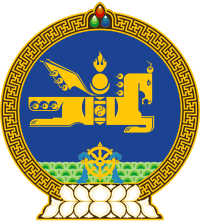| Revision as of 16:35, 14 August 2016 editBeshogur (talk | contribs)Extended confirmed users33,304 editsNo edit summary← Previous edit | Revision as of 06:17, 24 August 2016 edit undoYobot (talk | contribs)Bots4,733,870 editsm clean up / fix section header naming (WP:ASL) using AWB (12082)Next edit → | ||
| Line 5: | Line 5: | ||
| ] | ] | ||
| Tulpar came to be was due{{ |
Tulpar came to be was due{{Clarify|date=May 2013}} to the nature of the people in ]: focused around a hunting life. The people hunted with horses, with the company of a bird of prey. These two animals, with the human imagination, formed into one creating the winged horse known as Tulpar. | ||
| This mythical creature has also been used as state symbols of ] – the emblem of which is decorated with two golden Tulpars, the top of the yurt (the ] is a traditional tent where the Kazakhs lived) and the sun rays. The blue background represents the sky where the Tulpars run. |
This mythical creature has also been used as state symbols of ] – the emblem of which is decorated with two golden Tulpars, the top of the yurt (the ] is a traditional tent where the Kazakhs lived) and the sun rays. The blue background represents the sky where the Tulpars run. | ||
| Tulpar is the legendary horse that appears in culture of Turkic-speaking nations (Turks, Uzbeks, Kazakhs, Kyrgyz, etc.). | Tulpar is the legendary horse that appears in culture of Turkic-speaking nations (Turks, Uzbeks, Kazakhs, Kyrgyz, etc.). | ||
| Line 14: | Line 14: | ||
| The wings were not necessarily for flight but to emphasize their speed. This is the case for the Tulpar. These horses shared their lives with their masters. | The wings were not necessarily for flight but to emphasize their speed. This is the case for the Tulpar. These horses shared their lives with their masters. | ||
| == See |
== See also == | ||
| *] | *] | ||
| *] | *] | ||
| Line 32: | Line 32: | ||
| ] | ] | ||
| ] | ] | ||
| {{Europe-myth-stub}} | {{Europe-myth-stub}} | ||
Revision as of 06:17, 24 August 2016

Tulpar (Template:Lang-kk, Template:Lang-ba, Template:Lang-tt, Template:Lang-ky, Template:Lang-tr) is a winged or swift horse in Turkic mythology (for example, Kazakh and Tatar mythology), corresponding to Pegasus. Tulpar is also in state emblems of Kazakhstan, Mongolia and Bashkortostan

Tulpar came to be was due to the nature of the people in Central Asia: focused around a hunting life. The people hunted with horses, with the company of a bird of prey. These two animals, with the human imagination, formed into one creating the winged horse known as Tulpar.
This mythical creature has also been used as state symbols of Kazakhstan – the emblem of which is decorated with two golden Tulpars, the top of the yurt (the yurt is a traditional tent where the Kazakhs lived) and the sun rays. The blue background represents the sky where the Tulpars run.
Tulpar is the legendary horse that appears in culture of Turkic-speaking nations (Turks, Uzbeks, Kazakhs, Kyrgyz, etc.). The association of a bird with a horse can also be changed to that of a sight hound. A picture of a sight hound coming together with a picture of a legendary horse allowed for the word Tulpar to form, which is the kennel name.
The wings were not necessarily for flight but to emphasize their speed. This is the case for the Tulpar. These horses shared their lives with their masters.
See also
Bibliography
- Rémy Dor, Contes Kirghiz de la steppe et de la montagne, Publications orientalistes de France, 1983, 166 p. (ISBN 9782716901666)
- Gilles Veinstein, Les Ottomans et la mort, vol. 9 de Ottoman Empire and its heritage, BRILL, 1996, 324 p. (ISBN 9789004105058)
- Hervé Beaumont, Asie centrale: Le guide des civilisations de la route de la soie, Éditions Marcus, 2008, 634 p. (ISBN 9782713102288)
External links
- Статья «Тулпар» в Энциклопедии Башкортостана Template:Ru icon
- А. Илимбетова. Культ коня у башкир Template:Ru icon
- Halpress - Tulpar
This article relating to a European folklore is a stub. You can help Misplaced Pages by expanding it. |